The status quo, opportunities and future of in-depth analytical rehabilitation robots
On the afternoon of March 3, 2018, the Robot Lecture Hall ushered in the first lecture of the year. The guest speaker was Hou Zengguang, a researcher at the Institute of Automation, Chinese Academy of Sciences. He brought wonderful sharing to the opportunity and challenge of rehabilitation robots.
Hou's research focuses mainly on rehabilitation robots. He has developed minimally invasive vascular interventional robots, rehabilitation robots for stroke and spinal cord injury patients, multi-channel EMG signal acquisition devices, and multi-channel electrical stimulation devices. He had undertaken the national 863 plan. The National Natural Science Foundation of China, the Science and Technology Assistance and Rehabilitation Project, etc. obtained more than 20 invention patents and published more than 100 papers. Currently serving as editorial board members for IEEE Transactions on Cybernetics, Neural Networks, and Control Theory and Applications.

The following is the Robot Lecture Hall organized by Hou Zengguang's researcher's speech. Welcome to share.
Artificial Intelligence & Robotics
Professor Hou said that artificial intelligence and robots are accompanied by each other and grow together. The robot is the best platform for verifying artificial intelligence, and it is also an effective tool for testing artificial intelligence algorithms and methods.
Both artificial intelligence and robots have emerged from the middle of the last century. Their appearance has profoundly changed the way people live and work. Why are artificial intelligence and robots produced together, hot together and now hot again? There are many factors, and one of the major factors is that the demand for robots and artificial intelligence is very strong nowadays. At the same time, the technical conditions and technical reserves of the two have reached a certain stage. This has led to a resurgence and an upsurge of artificial intelligence and robots. . And this boom will be a good opportunity for many young people who are starting businesses today.
Professor Hou also mentioned that artificial intelligence is to better serve human society, and how to integrate biological intelligence into machine intelligence is a challenge faced by robotics and a problem that rehabilitation robot researchers need to solve...
Rehabilitation robot market
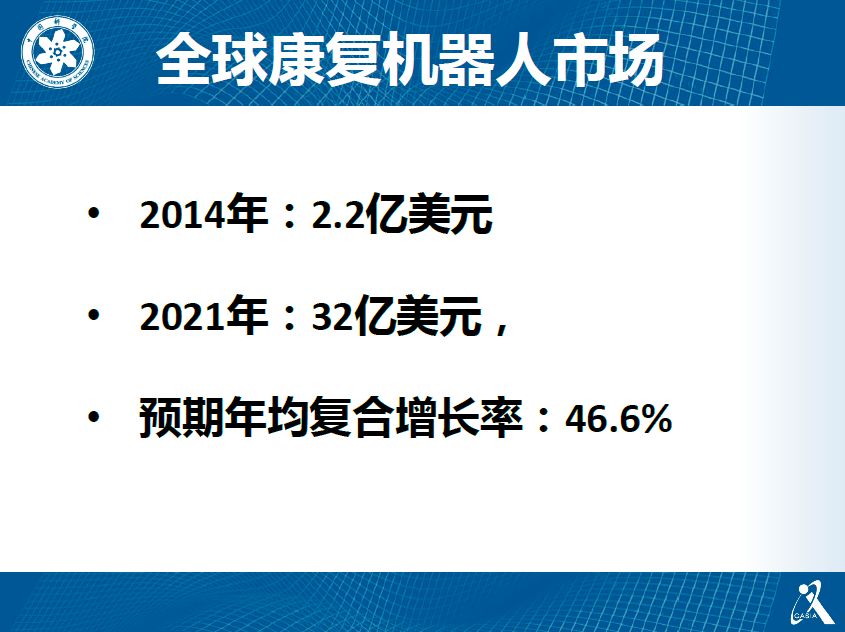
Global and domestic markets
According to authoritative data, the market share of global rehabilitation robots in 2004 was US$220 million, and it is expected to reach US$3.2 billion by 2021. Its ultra-high growth rate is incomparable to other industries...
The potential of the domestic rehabilitation market (not only rehabilitation robots, but also all rehabilitation equipment and auxiliary equipment) is 400 billion yuan, and the strict sense of rehabilitation robots will also have a considerable scale.
There are more than 7,000 rehabilitation medical institutions in China, but only less than one third of them can provide rehabilitation training.The data in 2014 shows that there are more than 20 million people with physical disabilities in China, of which only a small fraction (about 30 more) Ten thousand people can get physical rehabilitation training, and the effect of rehabilitation training is not the same.
The huge gap between the supply of rehabilitation equipment and clinical needs
Rehabilitation departments belong to a very comprehensive department, and doctors generally have urgent needs for high-end medical equipment and technology. These include rehabilitation of stroke patients, rehabilitation of spinal cord injuries, and rehabilitation of nerve injuries. Among the hospitalized patients with cardiovascular and cerebrovascular diseases, tumors, and limb fractures, a large number of patients need rehabilitation. However, the current domestic work in these areas is still very lacking.
Aging society needs
According to the latest UN standards, the population aged over 65 reaches 7%, which is regarded as an “aging societyâ€, 14% as an “elderly society†and 21% as a “super-aging societyâ€. In April 2017, the Standard Chartered Bank’s research report predicts that China will experience a 25-year transition from an aging society to an aging society. In the same transition, the United Kingdom needs 45 years, the United States needs 69 years, and France needs 115 years. Moreover, China will enter a super-aging society in 2035. The “Survey of the Fourth Living Situation of Older Persons in Urban and Rural China†showed that as of 2016, there were 40.63 million disabled and semi-disabled people in China, accounting for 18.3% of the elderly population. At present, there are more than 200 million people in China who are over 60 years old. Many elderly people are faced with the problems of stroke and other various diseases. Rehabilitation and treatment are extremely important contents.
Medical application background
Professor Hou gave us a focus on neurological rehabilitation at the scene. At present, rehabilitation robots targeting the central nervous system are also the mainstream in the world. The central nervous system includes two major parts, one is the brain and the other is the spinal cord. Their damage will cause damage to the human body. There are several types of injuries, one is due to stroke, cerebral hemorrhage and other injuries caused by the aging of the elderly, the second is trauma, such as traffic accidents, site damage, and the other is caused by diseases or natural causes. Disability.
Severe nerve damage can threaten the life of the patient. Lighter injuries can also lead to cognitive impairment and behavioral disorders. Patients with nerve damage are a group of people in need of rehabilitation.
Hemiplegia is usually caused by a stroke, which can cause cognitive and motor dysfunction and affect the quality of life of the patient. In China, about 2 million new people are added each year, and there are an additional 1 million patients with SCI (central nerve injury). These patients will cause heavy family burdens.
Medical statistics show that 80% of survivors have cognitive, speech, or motor impairments that require rehabilitation. However, rehabilitation itself is actually a manual work and it is easy to cause secondary damage to the patient. China now lacks rehabilitation therapists, and the cost of rehabilitation is higher. In the existing traditional rehabilitation training rooms, some very simple devices are commonly used, and the human-computer interaction function is poor. However, the rehabilitation itself has a high demand for human-computer interaction. This is the research background of rehabilitation robots.
Research Status of Rehabilitation Robots at Home and Abroad
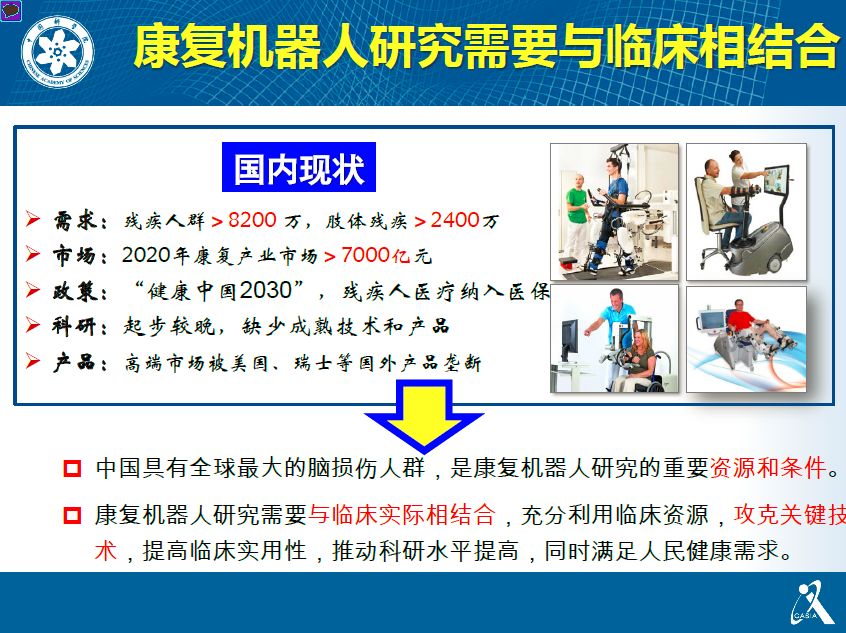
Rehabilitation robots differ from industrial robots in many ways, just as the therapist's task is very different from that of the worker. With regard to whether rehabilitation robots can achieve the functions of rehabilitation therapists and achieve the effect of rehabilitation, there are some direct verifications in the BRAIN journal (Internationally Recognized Medical Journal). Among them, the robot can assist the patient's hands to do a simple grasping training, and there are some indirect verifications. It proves that the rehabilitation robot and the rehabilitation training device can improve the motor function of stroke patients, and also proves that the artificial rehabilitation training apparatus partially replaces the rehabilitation therapist. .
In fact, rehabilitation robots can be traced back very early, and the development trend in the past decade or so has been very good. People's attention has increased a lot. The earliest rehabilitation robots are mainly to help people walk. If we regard the appliance as the initial front end, it can be predicted from the trend that the robot will be able to effectively replace human rehabilitation work. On the one hand, it is to restore athletic ability. On the other hand, it helps people who cannot live on their own or whose ability to live is reduced to restore and maintain their original ability to live, and even improve their ability to live.
Rehabilitation Robots Opportunities and Challenges

Professor Hou said that rehabilitation robots have great market and commercial opportunities in China. However, China started late, and it lacks mature and widely recognized products. The future development trend of rehabilitation robots has many main lines, and the control based on human-computer interaction is an important main line for the development of rehabilitation robots in the future. This process requires us to obtain status signals, dynamics, kinematics, and so on of the robot. With regard to human physiological signals, we need to obtain myoelectric signals, EEG signals, blood pressure, and breathing. EEG is easily affected by the external environment, and myoelectric signals are also affected by dry skin moisture, hair and other factors.
Using myoelectric control rehabilitation robot
Professor Hou discussed the application of four aspects with everyone. One is based on myoelectric triggering myoelectrical control methods, the other is proportional-based control myoelectrical control methods, and based on pattern recognition and muscle-based control methods.
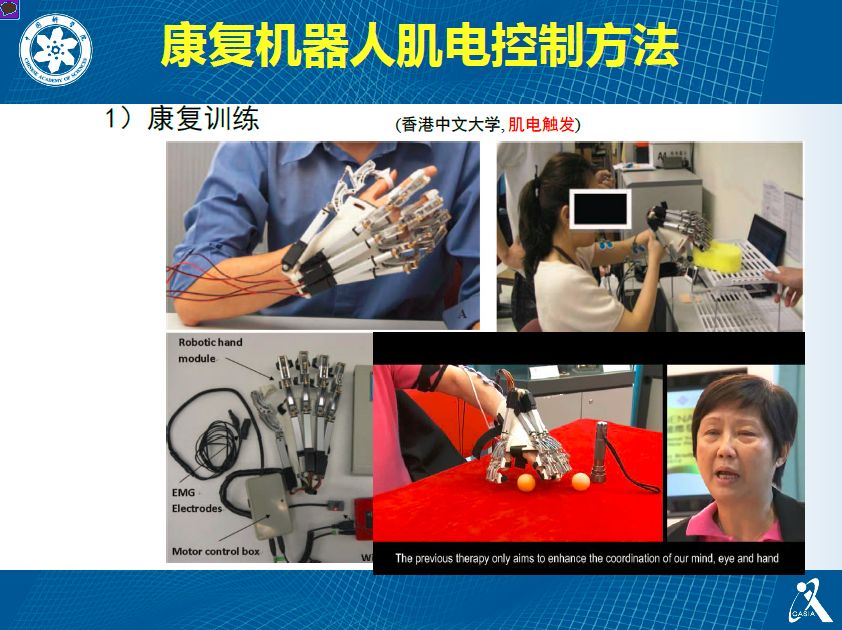
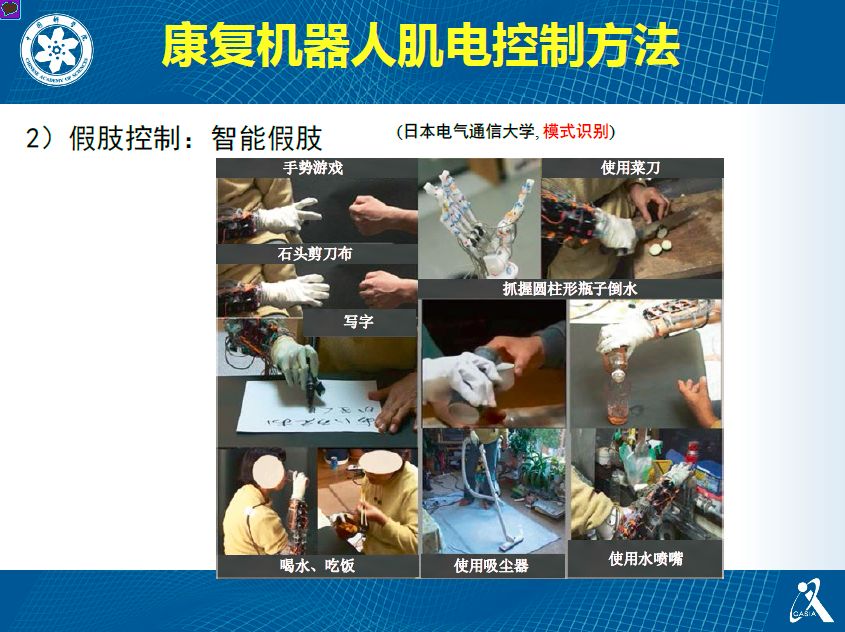
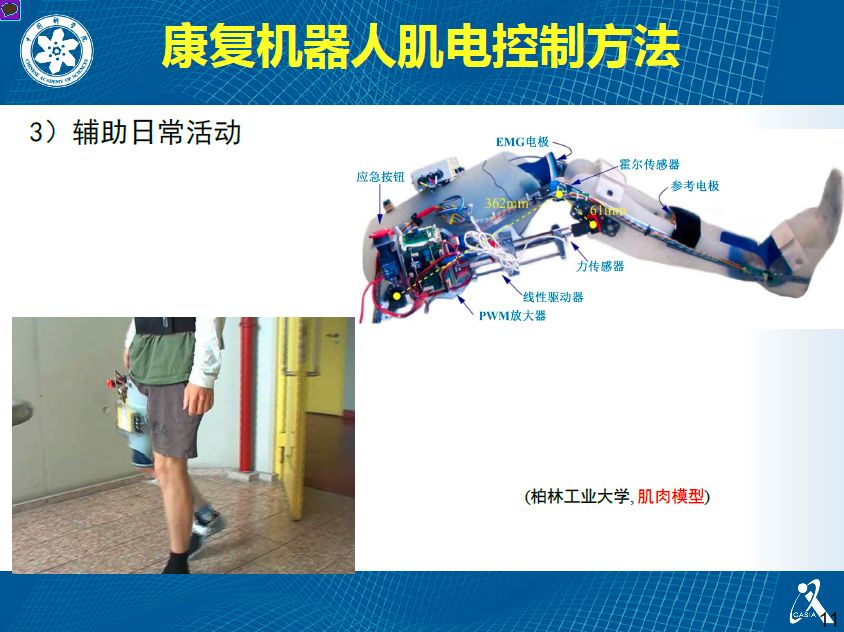

In patients with stroke, the motor function of the upper limbs or lower limbs is impaired. The surface electromyographic signals can be used to detect and determine the state of the patient's movement. Based on this, the researcher controls and trains the rehabilitation robot accordingly. Another application of surface EMG is rehabilitation assessment, which can determine the stage of the patient...
Research Progress - System Principle
Normal human neural pathways are unobstructed. Like a control system, the brain is a command organ. The lower limbs and limbs are equivalent to actuators. When the spinal cord is damaged, the brain's command to the actuator is blocked or damaged. At this time, the instructions of the brain cannot be successfully conveyed.
There is now research that uses artificially generated electrical pulse signals instead of biological nerve electrical pulse signals to stimulate muscles and allow them to perform motor functions. The neural signal is very weak and there are some methods to obtain it, but there are many challenges in practical applications whether surface or implanted.
Rehabilitation robot design and clinical problems
The human body's EMG signal is ahead of human motion, ahead of the movement result, very sensitive and able to reflect fine movement. The challenge that researchers face today is how to better and more accurately identify this signal. The next step is how to feed artificial instructions back to the moving organs. At present, electric pulses can be used to stimulate the muscles to produce movements. In the case of a malfunction of the neural pathway and no biological neural signal drive, artificial electrical signals are driven to achieve simple human motion. There is a lot of work to be done here, including the control of the human musculoskeletal system. Modular rehabilitation robots have also been developed for patients with different conditions of hemiplegia.
Professor Hou said that although current rehabilitation robots can only replace therapists in certain local treatments, the level of therapists is generally not achieved, but with the improvement of functions and data, it is believed that in the future rehabilitation robots will Functionally beyond the therapist.
Summary and outlook

First, the humanized and personalized design of rehabilitation machines is still far from adequate.
Second, there is a lack of collaborative control between multiple platforms. This includes coordination among machines, coordination between people, and coordination among doctors.
Third, the autonomy and adaptability of robots are still relatively weak and the level of intelligence is insufficient. In particular, the ability of human-computer interaction is relatively weak, which is also the direction of future research.
Fourth, rehabilitation robots need to be driven by capital and standardized markets. This involves many aspects such as policy, management, hospitals, etc., as well as many issues worth thinking about.
7.62MM Power+ Signal Power Connector
power connector is used in power module system. It can select the matching power + signal connector according to the need. The feature is that the number of power and signal contacts and the matching sequence can be selected arbitrarily while keeping the connector size and contact core number unchanged.
Plug (male) / socket (female) can be installed at 90 or 180 degrees. It supports mixed or independent combination of signal and power. The quantity range of power and signal is (2-16) pin and (12-128) pin respectively
Product features
High temperature resistant, glass fiber reinforced and flame retardant polyester is used as insulation material
Copper gold composite conductor with high conductivity is used, and the contact area of the conductor is plated with gold
It adopts shrapnel contact, which has the characteristics of integration, small volume, large current carrying capacity, soft plug-in, blind plug-in, self guidance and high dynamic contact reliability. This series of products can be interchanged with FCI's powerblade series and Tyco's multi-beam series
There are three sizes of center distance of power contact: 5.08mm, 6.35mm and 7.62mm
The length of power hole / signal pin can be selected in two sizes. The power rated current is 45A and the signal rated current is 2.5A
7.62MM Power+ Signal Power Connector
ShenZhen Antenk Electronics Co,Ltd , https://www.antenkwire.com